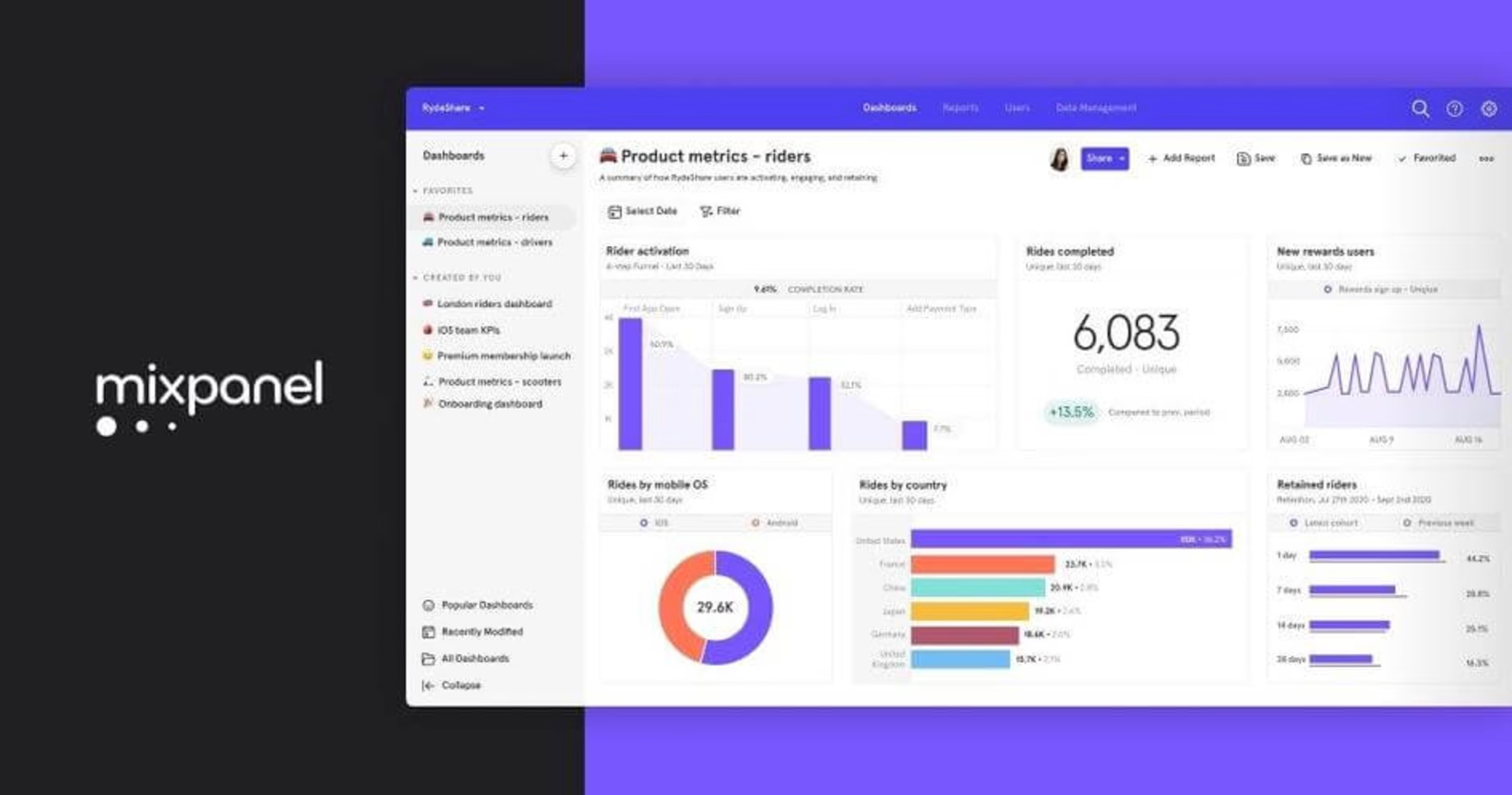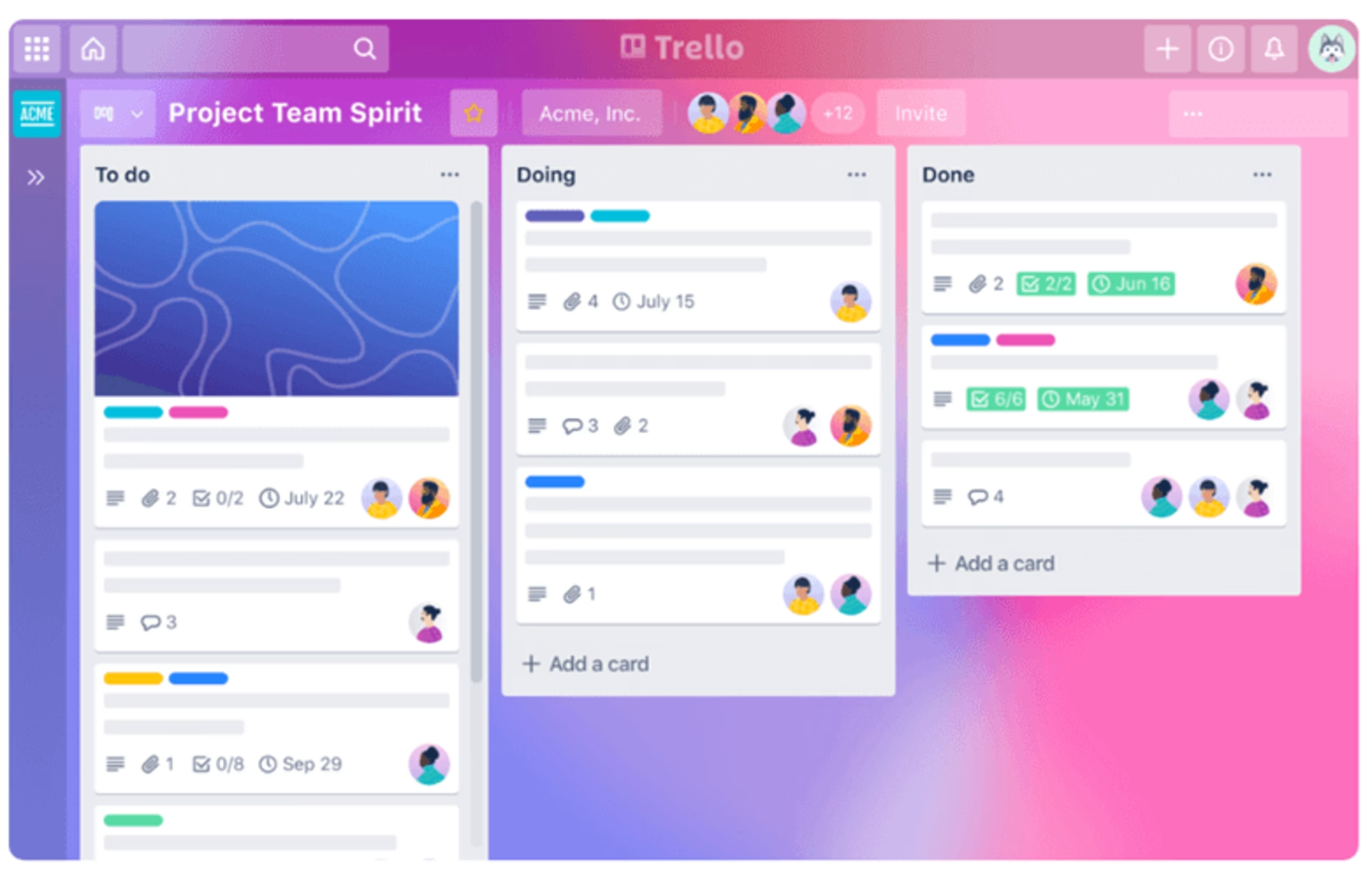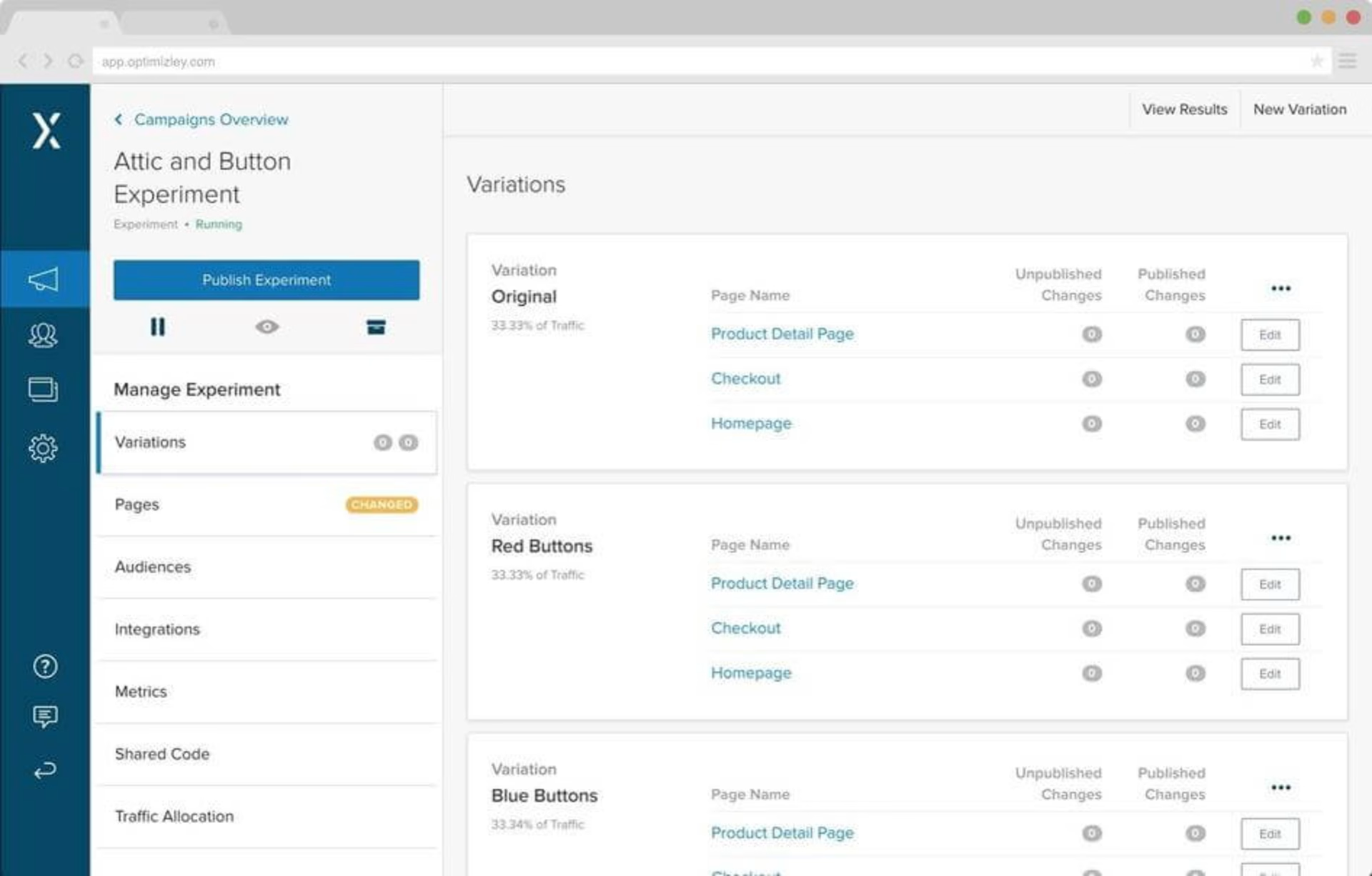Without skillful product planning, even the best ideas won’t translate into successful, well-executed products.
Strong product planning ensures your product solves the right problems for users, helps you get buy-in from organizational stakeholders, and enhances teamwork.
There are lots of tools that can help with product planning. But if you don’t choose the right tools for your needs, you can end up overloading your team with software they don’t need or use.
This article shows you how to build a solid product tech stack to optimize product planning and connect you to user needs throughout the product lifecycle.
Summary
Product planning matters because it lets companies align their efforts with market demands and user needs while allocating resources and keeping their team on track
The right product planning tools can enhance team organization, strengthen user connections, and improve organizational alignment, ultimately streamlining the entire process. Those tools include
Quantitative and qualitative tools like Mixpanel, Google Analytics, Sprig, and Contentsquare
Roadmapping tools like ProductPlan, Productboard, and Trello
Workflow tools like ClickUp, Jira, and Zapier
Communication tools like Github and Slack
Testing tools like UserTesting and Optimizely
Choose the right tools for your tech stack based on budget, usability, features, integrations, and customization options
Why product planning matters
Product planning is the strategic process of researching, prioritizing, and preparing for execution to build a successful product. It’s crucial to execute successfully on your product vision. But it’s also necessary to make sure your product vision is the right one for your organization and market in the first place.
Some of the key product planning functions for a product manager include
Understanding your market, user needs, and product positioning
Setting product goals and roadmapping
Prioritizing which features and products to develop
Getting stakeholders on board
Keeping your product team on track
Testing and iterating to better solve your users’ problems
"
Product management should always take into account whether what we’re doing is the right thing to do (at this point in time), and whether we’re doing it right. Invariably, then, a product team is constantly planning and replanning based on research, data, customer feedback, etc.
Darren Heaphy
VP of Product, eDesk
In short, product planning helps you bring the right products to the right users, from design to delivery.
Having the right product planning tools in your toolkit can streamline the process to keep your team organized, connected with users, and aligned within the organization.
"
Product planning is everything. Without it, no new tools could ever be developed and teams would be working without any clear goals in mind. It would be a nightmare!
Luke Thompson
COO, ActionVFX
The best product planning tools
Since product planning encompasses a wide range of product management activities, you’ll need to use different tools at different stages of product development.
The right tech stack will help you manage the ins and outs of the product development process while keeping you connected to the bigger picture. Here are our suggestions:
Quantitative user and product insights tools
A data-informed approach to product planning is key. It’s important to use the right mix of user behavior and product insights tools to unearth a rich stream of user information you can use to understand your customers’ needs and frustrations.
1. Mixpanel
Mixpanel gives teams quantitative data and tracks how customers use your product, including how they navigate and what the most popular product features are. You can use this data to inform product and feature development and iterations. Mixpanel is a powerful tool with a bit of a learning curve—and a medium-size price tag—but it offers granular data tailored to product teams.

Image Source: Mixpanel
2. Google Analytics
Google Analytics collects and analyzes web and app traffic so you can better understand how different user segments behave, flag conversion issues, and tailor content and products to increase engagement.

Google Analytics is free and relatively easy to use, but it’s more useful for purely web-based products than SaaS.
Qualitative user and product insights tools
But without complementing this quantitative data with qualitative insights that show you how users really feel, you won’t get to the heart of their core needs. Don’t worry—there are several tools available that gather qualitative data to complement statistical insights.
3. Sprig
Sprig (formerly UserLeap) is one highly-recommended option that lets you send micro-surveys to your users. By collecting VoC data, you can understand their experiences in their own words.

Image Source: Sprig
4. Contentsquare
Contentsquare is a comprehensive product experience insights tool that gives product teams a steady stream of quantitative and qualitative user data. Tools like Heatmaps and Session Replay track clicks, scrolls, and other indicators of how users are behaving.
![[Visual] Session Replay](http://images.ctfassets.net/gwbpo1m641r7/ixsmocDmrb471y732GpId/a5d0b671a70df5f177bfe7262388623d/Screenshot_2024-11-04_at_19.22.27.png?w=3840&q=100&fit=fill&fm=avif)
While Surveys let you ask customers about their experiences, problems, and responses to possible new products. It’s an intuitive tool with significant firepower.
And Product Analytics gives you a look into user journeys to help improve retention and loyalty.

Contentsquare can fill in the gaps left by tools like Google Analytics and help you improve aspects of product planning like ongoing product research and stakeholder reporting.
"
Qualitative research answers the ‘why’ and ‘how’ type of questions, whereas quantitative research tends to answer questions such as ‘how much’ and ‘how many’, so it’s good for prioritizing. I tend to use Contentsquare for more qualitative data and Google Analytics for quantitative data.
Andreas Johansson,
UX Specialist
Roadmapping tools
Once you’ve determined which products and features will meet user and business needs, it’s time to focus on the product strategy and roadmap.
Roadmapping tools keep your product roadmap organized, let you track real-time progress, and make it easily accessible to your product team and other organizational stakeholders. This promotes transparency and cross-functional collaboration throughout your product planning.
5. ProductPlan
ProductPlan is a simple but robust tool for planning, visualizing, and communicating your roadmap. It’s a good option if you want an intuitive interface that non-techies can easily understand.

Image Source: ProductPlan
6. Productboard
Productboard is a more comprehensive and slightly more expensive software. As well as roadmapping visualization and planning, it has a suite of features for prioritizing requests and incorporating user feedback into your maps.

Image Source: Productboard
7. Trello
Trello is another tool that product teams use to track product development and organize feature requests. And their templates give teams a head start on creating valuable roadmaps.

Image Source: Trello
Workflow tools
Workflow tools help product teams collaborate on the day-to-day work that needs to be done. Some of these tools can be used for roadmapping and strategy planning as well as workflow management.
8. ClickUp
ClickUp is one of the most popular options, as a full-scale suite for managing people, projects, and products. It has templates specifically for product management—with designated spaces for planning, briefs, and release notes—and it’s easy to customize and duplicate task structures to streamline your workload. It can also be used for product ideation and roadmapping.

Image Source: ClickUp
9. Jira
Jira is another favorite, especially in product teams that use agile methodologies (Jira supports Scrum, Kanban, and other frameworks). It’s designed as an all-in-one solution for planning, tracking, and managing the development process, with boards, backlogs, reports, and roadmaps.

Image Source: Jira
10. Zapier
Zapier is another commonly-used tool, but with very different functionality. It’s not a comprehensive workflow management solution—instead, it lets you automate tasks in your workflow by triggering actions in the web apps you already use. This helps product teams build out processes faster and more efficiently.

Image Source: Zapier
Communication tools
Product planning can’t happen without stellar communication. Collaboration tools that promote clear, structured dialog can help ensure alignment within the product team and wider organization.
11. GitHub
GitHub is a favorite of product developers. It lets your team review and comment on product changes, track issues, contribute to an open-source community, and stay in sync through customizable feeds. Since it’s mainly geared towards development, though, it’s not a full-scale communications solution for all product team members.

Image Source: GitHub
12. Slack
Slack is a more comprehensive tool that organizes messages and files through different channels, which can be assigned to workspaces, work groups, or projects. It’s a flexible tool that can be tweaked to suit the unique needs of your team.

Image Source: Slack
Pro tip: take advantage of Contentsquare’s integration with Slack to get a regular stream of user data sent directly to the people who need it.
Testing tools
Product testing happens at every stage of planning, from validating initial ideas to running usability testing on an MVP or final product. Streamlining your product testing process with dedicated software can save on time, errors, and wasted resources.
13. UserTesting
UserTesting offers a video-first testing platform. Ask users to answer questions or perform tasks, observe the metrics and results, and watch a video of their experience to connect with their reactions through facial expressions, body language, and tone of voice. It’s an intimate approach to product experimentation.

Image Source: UserTesting
14. Optimizely
Optimizely is a more comprehensive experimentation tool for A/B testing and feature management that offers performance support and deeper analytics on user responses.

Remember: Contentsquare integrates with A/B testing tools like Optimizely so you can complement A/B test data with digital experience analytics for deeper insight.
Choosing the right product planning tools
Your product planning tech stack can have all the features in the world, but the features won’t have an impact if your team doesn’t use them regularly.
"
The best software for any function is the one you use. Making sure it is rolled out correctly across the organization is crucial to getting the most out of the application.
Sean Broderick
VP of Product, eDesk
Remember: product planning isn’t something you do once then forget about when you start building. Your team will engage in product planning throughout the product lifecycle to make sure your product continues to delight users as their needs and expectations shift.
To determine which product planning tools are best at different stages in the process, decide what’s most important for the unique needs of your team.
Consider:
Budget: including maintenance costs, training time, and hidden fees.
Usability: think about how your team will handle the learning curve involved and how easy the interface is to use.
Features and functionality: depending on your goals and team size, you may want to focus on simpler tools that do a couple of things well, or you may need more complex software to meet enterprise-level needs.
Integrations: look at the apps currently in your workflow; determine which tools will fit seamlessly into your processes and which have specific integrations that can help you to unlock new features.
Flexibility: determine how much customizability you need in a tool, and check which modifications are available
"
It's important to have flexibility. Every team has a different way of prioritizing and messaging out. For example, we wanted to be able to have custom fields where we could include our prioritization scores on product requirements.
Chris Hunter
Product Owner
Pro tip: don’t make decisions on tools from the top down. Your team will be using the software, so talk to them! Before you even think about investing in a tool, find out what they think is most important, which features they see themselves using, and what they value—for example, usability over features.
How Contentsquare helps teams make user-centric product decisions
User needs should be at the center of the product planning process from beginning to end.
Contentsquare’s suite of product experience insights tools offer a birds-eye view of user behavior through Heatmaps and Journey Analysis, along with more granular, qualitative information through Session Replays and Surveys.
Contentsquare integrates with top product planning tools for roadmapping, workflow management, communication, and product testing, so you can streamline your user research, validate concepts, keep the team connected with user needs, and integrate feedback into product priorities.
With Contentsquare, product teams can feel confident they’re implementing the right product plan to solve users’ problems.
FAQs about product management tools for planning
What is product planning?
Product planning is the strategic process of researching, prioritizing, and preparing for execution, to build a successful product.
What are the best product planning tools?
Our recommendations for the best product planning tools are:
For behavior and product experience insights: Mixpanel, Google Analytics, Sprig, and Contentsquare
For roadmapping: ProductPlan, Productboard, Trello
For workflow management: Clickup, Jira, and Zapier
For communication: Github and Slack
For product testing: UserTesting and Optimizely
Why is product planning important?
Product planning is crucial to execute successfully on your product vision. But it’s also necessary to make sure your product vision is the right one for your organization and market in the first place. Product planning helps you bring the right products to the right users, from design right through to delivery.
